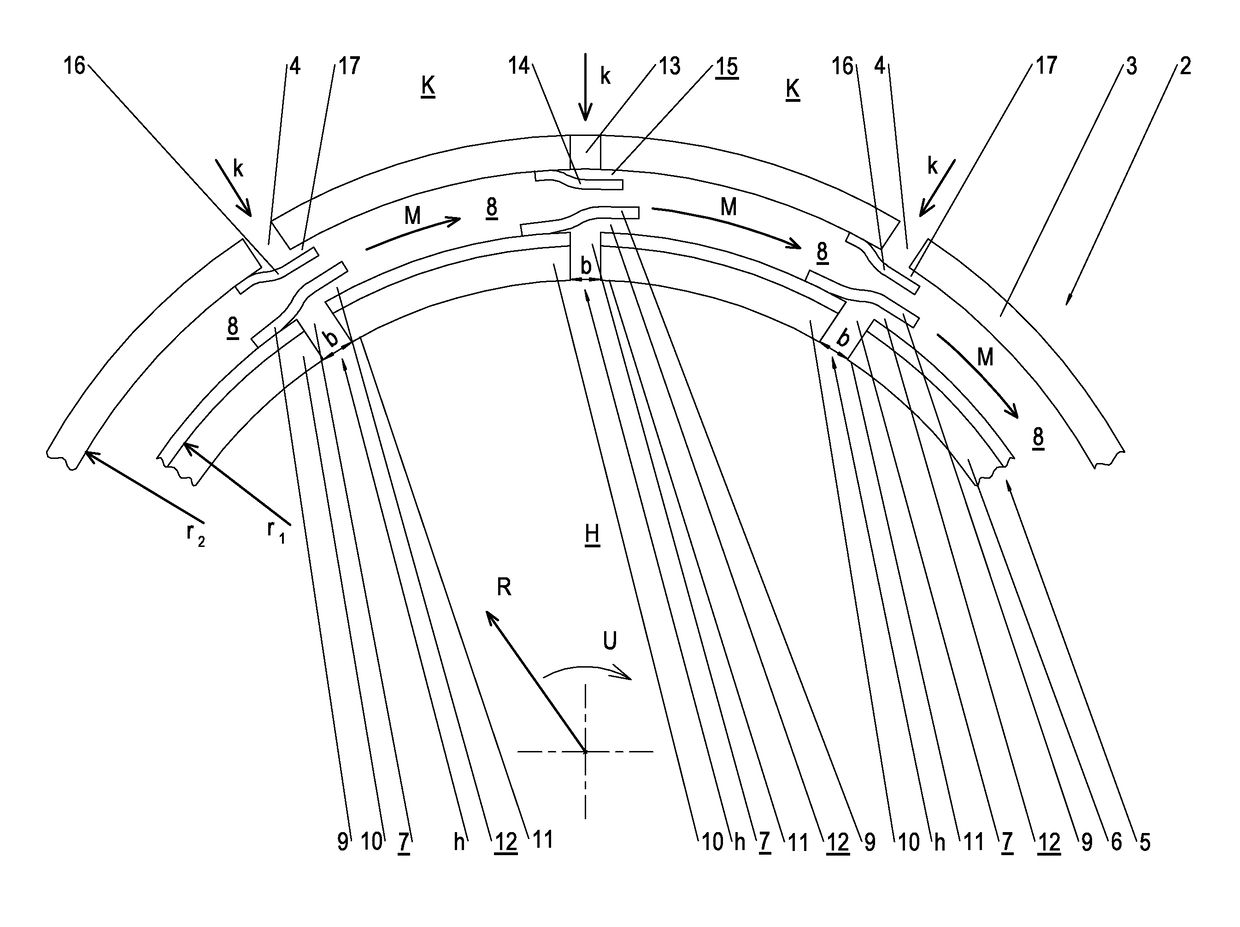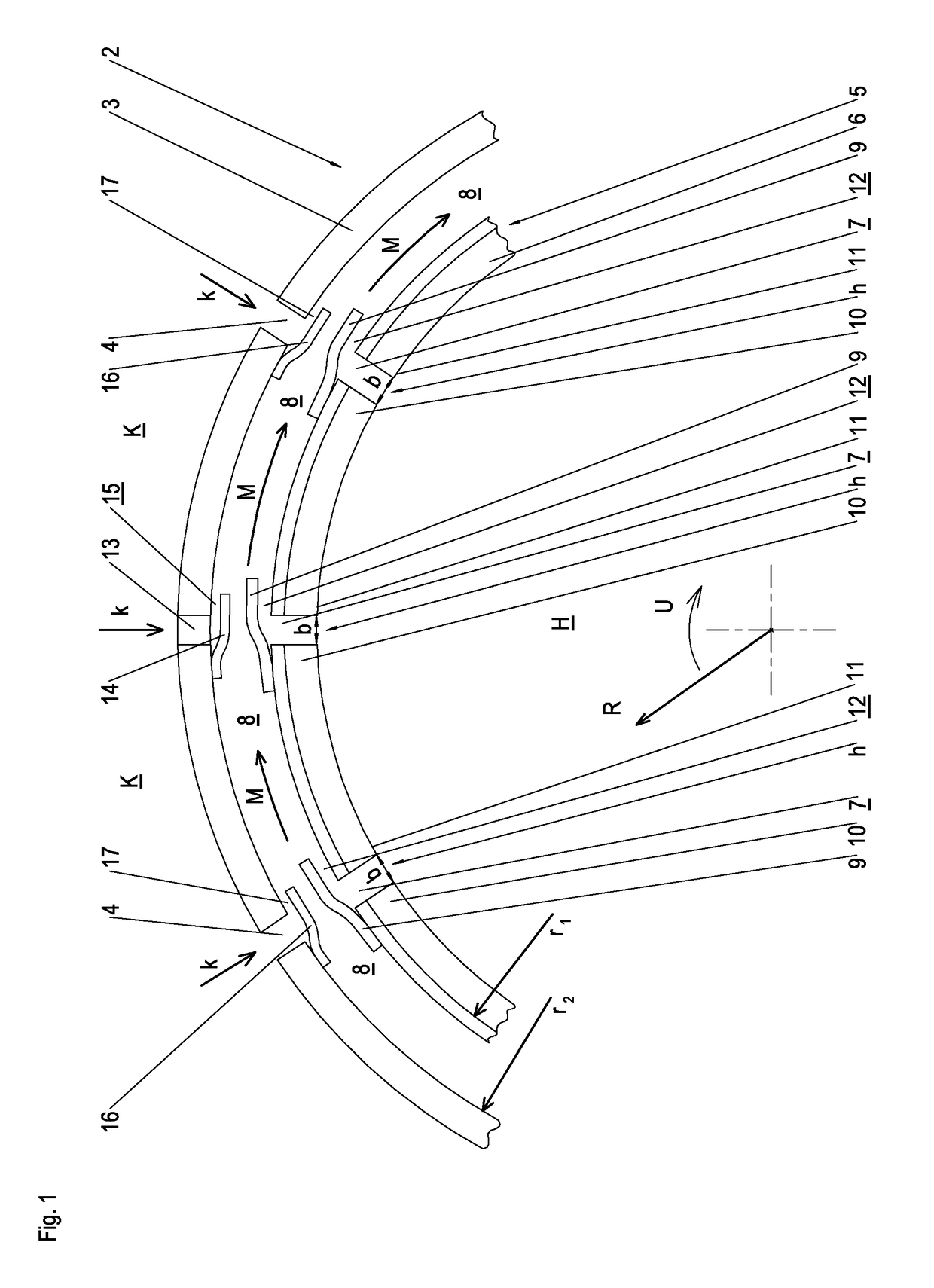Device and method for influencing the temperatures in inner ring segments of a gas turbine
a technology of inner ring segments and gas turbines, which is applied in the direction of engine fuction, leakage prevention, air transportation, etc., can solve the problems of increasing the weight of inner segments, still leakage of hot gas, and increasing manufacturing efforts, so as to prevent the formation of cracks, reduce the effect of heat loss and efficient and low-loss mixing
- Summary
- Abstract
- Description
- Claims
- Application Information
AI Technical Summary
Benefits of technology
Problems solved by technology
Method used
Image
Examples
Embodiment Construction
[0024]FIG. 1 schematically shows in cross section a device 1 having an outer shell assembly 2 and an inner shell assembly 5 of a not further shown thermal turbomachine which will be described below as a gas turbine in accordance with the exemplary embodiment. An outer shell assembly 2 and an associated inner shell assembly 5 are disposed between each two adjacent stator vane rings. Outer shell assembly 2 includes at least two outer ring segments 3. In FIG. 1, one outer ring segment 3 is illustrated in detail and two other outer ring segments 3 are depicted fragmentarily. Inner shell assembly 5 includes a plurality of inner shell segments 6, of which four inner shell segments 6 are shown in FIG. 1. The number of inner ring segments 6 is greater than the number of outer ring segments 3. In the figure, the ratio of the number of inner ring segments 6 to the number of outer ring segments 3 is two to one.
[0025]Inner ring segments 6 are curved in circumferential direction U of the gas tur...
PUM
 Login to View More
Login to View More Abstract
Description
Claims
Application Information
 Login to View More
Login to View More - R&D
- Intellectual Property
- Life Sciences
- Materials
- Tech Scout
- Unparalleled Data Quality
- Higher Quality Content
- 60% Fewer Hallucinations
Browse by: Latest US Patents, China's latest patents, Technical Efficacy Thesaurus, Application Domain, Technology Topic, Popular Technical Reports.
© 2025 PatSnap. All rights reserved.Legal|Privacy policy|Modern Slavery Act Transparency Statement|Sitemap|About US| Contact US: help@patsnap.com


